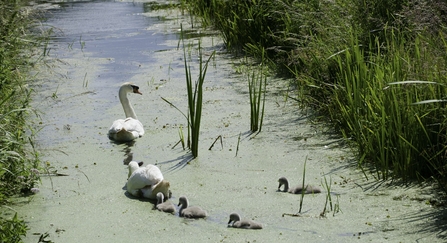In particular, the Trust are keen for the public to monitor the wildlife in and around the county’s rivers to help to build a clearer picture of the impacts that pollution from agriculture and sewage is having. Over the last few years, the drifts of water crowfoot, with their pretty white flowers, which were a key feature of the River Wye, have disappeared. Historically low numbers of salmon are regularly reported and many fish were found dead following last summer’s droughts.
Herefordshire Wildlife Trust’s Head of Conservation Claire Spicer says:
“We know many species in our rivers are suffering from the effects of pollution but it’s vital we have data to evidence this. The more information we have, the better we can understand the issues and target our conservation work to support the rivers’ recovery.
You don’t need to be an expert naturalist to take part. Records of common species and easily recognisable species such as mute swans, kingfishers or otters are all important, as well as less familiar species. Herefordshire Wildlife Trust also has an A to Z of wildlife on its website so you can do a bit of research before submitting a record if you’re not quite sure.
The records from the public will complement the data we regularly collect as part of specific surveys of particular sites or habitats to give us the most rounded picture possible.”

